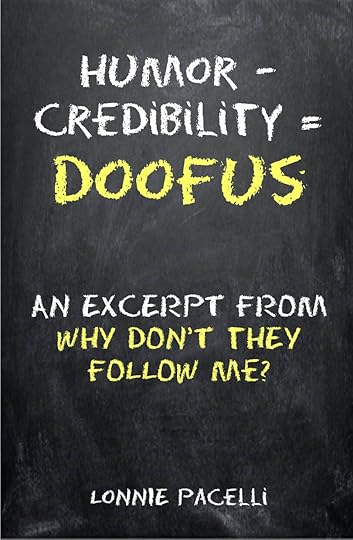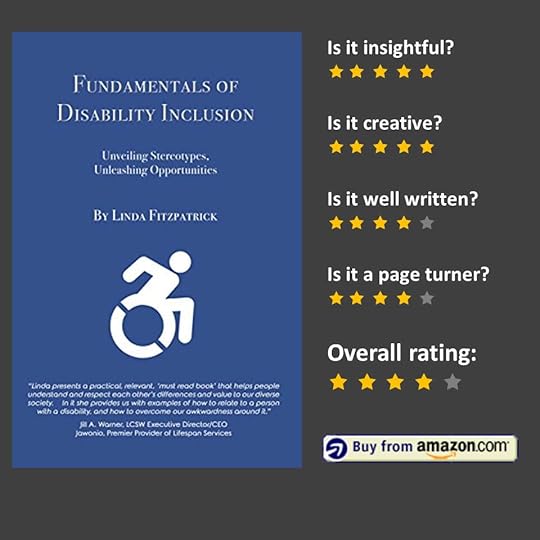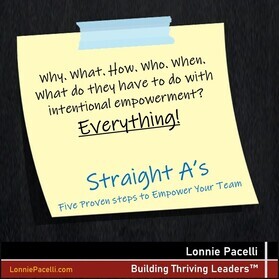Lonnie Pacelli's Blog, page 16
July 6, 2023
Free 7/12-13: Humor-Credibility=Doofus
 Free 7/12-13: Humor-Credibility=Doofus
Free 7/12-13: Humor-Credibility=DoofusGet it at https://amzn.to/2S3rVOS
#freebook #leadership #kindle #kindlefire #ebooks #ebook #Kindlefreebooks #Kindledeals #FREE #mustread #goodreads #greatreads #freebie #freebies #kindlebook #ad #teamwork
Published on July 06, 2023 02:35
Working to ‘Done,’ Not on What You Have ‘To Do’
 Our son, Trevor, has worked for our company twice—once right after he graduated from college in 2015, and again in September 2021 after working three years at a non-profit. His official title is Chief Storyteller.
Our son, Trevor, has worked for our company twice—once right after he graduated from college in 2015, and again in September 2021 after working three years at a non-profit. His official title is Chief Storyteller.Since working for us, Trevor has written and published two books, re-illustrated a third, and is actively learning the publishing business. He also has a goal of writing young adult books, and as of this writing is working on his first fiction piece.
Trevor was diagnosed with autism spectrum disorder at age 6, and throughout his life has had his share of challenges. When we first hired Trevor, we were faced with how to align on goals, give him some flexibility as to how he achieved the goals, and avoid micro-managing him with frequent “What are you working on today?” requests.
To address the need, we devised something we call the “dones” process, which aligns us on long-term goals and short-term deliverables that align to the long-term goals. We have successfully been using this throughout his employment tenure, and it has proven to be effective in keeping my wife Patty and I aligned with Trevor’s work.
After I told a few colleagues about the process, I consistently heard how valuable this could be for neurotypical people, not just for people on the autism spectrum. So I wanted to explain precisely how we manage to dones and provide a tool you can use with your leader (or if you are a leader yourself, use with your staff).
Read more on ProjectManagement.com.
Published on July 06, 2023 02:35
June 29, 2023
The Autistic Brain: Helping Different Kinds of Minds Succeed
 Summary:
Summary:An indepth view of neuroimaging and genetic research, their link to behavior of those both neurotypical and autistic, and how to help those on the autism spectrum better succeed in life.
Is it insightful? 5 Stars
Deep analysis of how the brains of neurotypical and those on the autism spectrum differ. Book examines cause-effect relationships such as how Grandin’s elongated left ventricle extends into her parietal cortex, which is associated with working memory, which explains her difficulty with short-term memory.
Is it creative? 5 Stars
Great use of stories about both Grandin and others she knows in the autism arena. The stories make for an easier understanding of some very difficult medical and technical concepts. Also very clever use of analogies, such as how Grandin describes parts of the brain using terms like CEO, VPs, and workers.
Is the well written? 5 Stars
Read in about five hours, just because there is so much technical and medical information to absorb. Great balance of facts and data with stories and examples using clear language. Only minor ding is that chapter headings aren’t hyperlinked back to the table of contents.
Is it a page turner? 5 Stars
Great progression of understanding the brain from a physical perspective and how it manifests into behaviors and social issues/stigmas surrounding autism. Grandin’s writing voice is well heard throughout the book, making it almost as if she were sitting with the reader talking about the book.
Overall Rating: 5 Stars
Published on June 29, 2023 02:28
The 1:1:1 Principle for Project Plans: Avoiding Chunky Peanut Butter Progress
 Driving to an optimal work-plan level of detail means balancing accurate reporting of progress with the degree of effort to needed manage the work plan. When a work plan is too high-level, task progress is left more to subjective assessment, which can create surprises as due dates approach.
Driving to an optimal work-plan level of detail means balancing accurate reporting of progress with the degree of effort to needed manage the work plan. When a work plan is too high-level, task progress is left more to subjective assessment, which can create surprises as due dates approach.When the work plan is too low-level, then administering the work plan becomes a project in and of itself—coupled with team member frustration with too many status reports. To balance the level of detail and reduce surprises, I’ve adopted a 1:1:1 principle for task level of detail, as follows...
Read more at ProjectManagement.com
Published on June 29, 2023 02:28
June 22, 2023
Book Review: How Can I Talk if My Lips Don’t Move? Inside My Autistic Mind
 Summary:
Summary:Tito Rajarshi Mukhopadhyay, a nonverbal man on the autism spectrum, gives insight into the autistic mind and how he thinks, sees, and reacts to the world.
Is it insightful? 4 Stars
Provides good insight into how Tito views the world and the unique perspective in which he relates to everyday events. As example, he describes watching basketball and football like watching swarming ants. I wanted more analogies.
Is it creative? 3 Stars
There is poetry interspersed throughout some of the chapters which is meant to help underscore concepts. I found the poetry a distraction and not helpful at all to the book.
Is the well written? 3 Stars
Read in about three hours. There was no logical progression of the chapters. One chapter he is in India, then he’s in Austin, then later in Hollywood. The author sometimes gave indication of how old he was, sometimes not. The book needed a good editor to scrub it.
Is it a page turner? 3 Stars
The longer I read the more I wanted the book to be over with. It read more like a random string of short stories. Even more disappointing is that it would not have been much work to sequence the chapters and make it read more chronologically.
Overall Rating: 3 Stars
Published on June 22, 2023 02:18
Don't Make This Critical Path Assumption
 When a PM muddies the water with statements like “everything is critical” to those who truly understand how a project’s critical path works, the PM causes others to question both the PM’s schedule and—more importantly—the PM’s credibility. Understanding the mechanics of critical path is a crucial hard skill that PMs need to master early in their careers.
When a PM muddies the water with statements like “everything is critical” to those who truly understand how a project’s critical path works, the PM causes others to question both the PM’s schedule and—more importantly—the PM’s credibility. Understanding the mechanics of critical path is a crucial hard skill that PMs need to master early in their careers.Before we go further, I’d like to define some basics that affect a project’s critical path...
Read more at ProjectManagement.com
Published on June 22, 2023 02:18
June 16, 2023
Are You Strategic, Tactical... or Stractical?
 People who are strategic in nature are effective at the why and what. They can paint a clear, compelling vision of some future state and get others to align to the future state. This skill is super critical in generating excitement and buy-in on the “what could be.”
People who are strategic in nature are effective at the why and what. They can paint a clear, compelling vision of some future state and get others to align to the future state. This skill is super critical in generating excitement and buy-in on the “what could be.”People who are tactical are effective at the how, who and when. They can ingest the compelling vision and translate it into an executable plan while effectively managing scope, schedule and budget. This skill is imperative if the strategist’s great idea is ever going to make it beyond slideware.
There are some, though, who are competent at the why and what as well as translating it into how, who and when. They can be strategic, but can also switch hats when the situation dictates and be tactical. Those who can do this are what I like to think of as stractical (my made-up word).
Read more at ProjectManagement.com.
Published on June 16, 2023 02:36
June 8, 2023
Book Review: Fundamentals of Disability Inclusion
 Summary:
Summary:Provides an overview of different disability categories, do’s and don’ts when interacting with someone with a disability, societal issues, and creating a welcoming environment.
Is it insightful? 5 Stars
Good statistics on the prevalence of disabilities in society. Outlines seven practical themes in facilitating relationships with people with disabilities. Great tips on how to interact with those with a disability, what to say, and what to do.
Is it creative? 5 Stars
Book is chock full of examples and real-life applications, i.e. how Walgreens distribution centers employ an average 35% of people with disabilities. Examples do a great job of reinforcing key concepts.
Is the well written? 4 Stars
Read in about two hours. Author communicates concepts simply and concisely. There were some formatting issues on Kindle that could have been resolved by simple proofreading.
Is it a page turner? 4 Stars
Book covered a lot of turf on disability inclusion. As a reader I was looking forward to what angle the author was going to cover next. What would have made it better is if the author’s personality came through in her writing. It read too much like a research paper; couldn’t really discern the author’s voice.
Overall Rating: 4 Stars
Published on June 08, 2023 02:27
Don’t Squander a Spectacular Failure
 As a new manager at Andersen Consulting (now Accenture), I was determined to show others how it was done. But I took on too many clients simultaneously and didn’t ask for help. When a colleague tried to tell me things were going south, I ignored him. My stubbornness, naivete and ignorance led to screwing up not one job, but three.
As a new manager at Andersen Consulting (now Accenture), I was determined to show others how it was done. But I took on too many clients simultaneously and didn’t ask for help. When a colleague tried to tell me things were going south, I ignored him. My stubbornness, naivete and ignorance led to screwing up not one job, but three.Not only did I mess things up, but I wasn’t honest with myself about what happened, why it happened, and how I contributed to it. I was accountable for three spectacular failures, and for years was in denial of my own culpability. I was also too proud to admit my failures to colleagues and management and help others learn from them.
Later in my career, I came to grips with what happened and was willing to share the experience with others. But there were times along the way I could have helped others but didn’t. Bad on me.
Read more at ProjectManagement.com
Published on June 08, 2023 02:27
June 4, 2023
Start Date Set in Stone? Schedule Using the Work-Forward Timebox Model
 In the Rough-Cut Timeboxing: The Work-Back Model article, I addressed the scenario of the project manager being given an end date and having to work backward to derive when the initiative should start (or should have started). But what about the scenario where a project manager is able to provide a start date?
In the Rough-Cut Timeboxing: The Work-Back Model article, I addressed the scenario of the project manager being given an end date and having to work backward to derive when the initiative should start (or should have started). But what about the scenario where a project manager is able to provide a start date?My experience has been more about being given an end date, but I’ve also had situations where I was able to forward-schedule work—or where I used forward and backward scheduling together to develop a rough-cut plan. In this article, I want to focus on that scenario using the rough-cut work-forward timebox model.
Read more at ProjectManagement.com
Published on June 04, 2023 02:18



